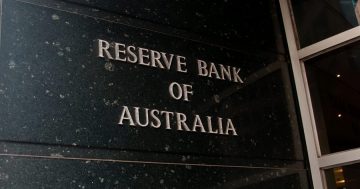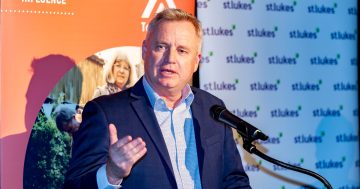Gareth Hutchens and Rachel Pupazzoni* say Australia’s unemployment rate fell below five per cent for the first time in 10 years and examine how we got here.
 The unemployment rate has fallen to 4.9 per cent, with almost 30,000 jobs created in June according to the official Bureau of Statistics data.
The unemployment rate has fallen to 4.9 per cent, with almost 30,000 jobs created in June according to the official Bureau of Statistics data.
The unemployment rate has now declined for eight months in a row, taking it to its lowest level in a decade.
However, while the unemployment rate dropped from 5.1 to 4.9 per cent in June, the underemployment rate jumped half a percentage point to 7.9 per cent.
That jump in underemployment derived from a 1.8 per cent decline in hours worked last month, which means 33 million fewer hours were worked across the economy.
That was mainly due to the impact of Victoria’s most recent snap lockdown, which occurred during the survey period.
Latest lockdowns cloud economic recovery
Gareth Aird, head of Australian economics at the Commonwealth Bank, said the data showed the labour market had “exceptionally strong momentum” in recent months.
However, he said things had taken a “dramatic turn” in New South Wales, with the lockdown of Greater Sydney in recent weeks, and with COVID now spreading again back to Victoria.
He said the impact of the current lockdowns would be captured in the July and August labour force surveys.
“The lockdown of Greater Sydney has significantly increased the level of uncertainty over economic outcomes in the near term,” he observed.
“A lockdown of seven weeks in Greater Sydney could see a significant number of NSW workers stood down.
“Based on what happened over April and May last year, employment could fall by 200,000 and unemployment may increase by 50,000 in coming months.”
However, Dr Sarah Hunter, Chief Australia Economist for BIS Oxford Economics, said the June employment data show the economic recovery had strong momentum before the NSW outbreak.
“But the impact of Victoria’s lockdown in late May/early June is also clear [in the data]; the number of hours worked fell 1.8 per cent as a result of the stay-at-home order,” she said.
“For Victoria specifically, the two-week lockdown led to an 8.4 per cent fall in hours worked between May and June, but pleasingly employment in the state only declined by 0.3 per cent month-on-month.
“This suggests that the majority of employers retained their workforce through the lockdown and were able to snapback and re-open when restrictions were eased.”
The participation rate, measuring people aged 15 and over either in work or looking for it, remained stable at 66.2 per cent.
Border closures having an impact
Marcel Thieliant, senior Australia and New Zealand economist at Capital Economics, said the size of the labour force only increased by 7,000 people in June, with border closures restricting immigration.
With the participation rate remaining steady, that helped the unemployment rate to decline to 4.9 per cent, he said.
“With the border set to remain closed until at least the end of the year, labour force growth will remain muted, so even small employment gains will result in a further decline in the unemployment rate,” he explained.
“The upshot is that wage growth should start to accelerate in earnest before long, prompting the Reserve Bank to tighten policy by early-2023.”
According to the ABS data, there are now 13,154,200 people employed (up 29,100 in the month).
Full-time employment increased by 51,600, to 9,016,800 people.
Part-time employment decreased by 22,500, to 4,137,400 people. The part-time share of employment is currently 31.5 per cent.
The underemployment rate increased from 7.4 per cent to 7.9 per cent, largely because of the lockdowns in Victoria.
That saw the underutilisation rate, which combines unemployment with underemployment, increase by 0.3 percentage points to 12.8 per cent.
A ‘blueprint’ for lower unemployment
Mr Aird said fiscal policy’s impact on the labour market in the last year showed what could be achieved with policy.
“It is amazing to think that in June 2021 Australia had its tightest labour market in a decade a year after its first recession in three decades,” he said.
“It shows what can be achieved with expansionary fiscal settings and a reduction in labour market supply.
“The blueprint is there to achieve a very tight labour market once again, as the vaccinations are fully rolled out.”
*Gareth Hutchens is a business and economics reporter based in Canberra. Rachel Pupazzoni has been a journalist with ABC News since 2006. She is currently a multi-platform reporter with the Business News team, based in Sydney.
This article first appeared at abc.net.au.











